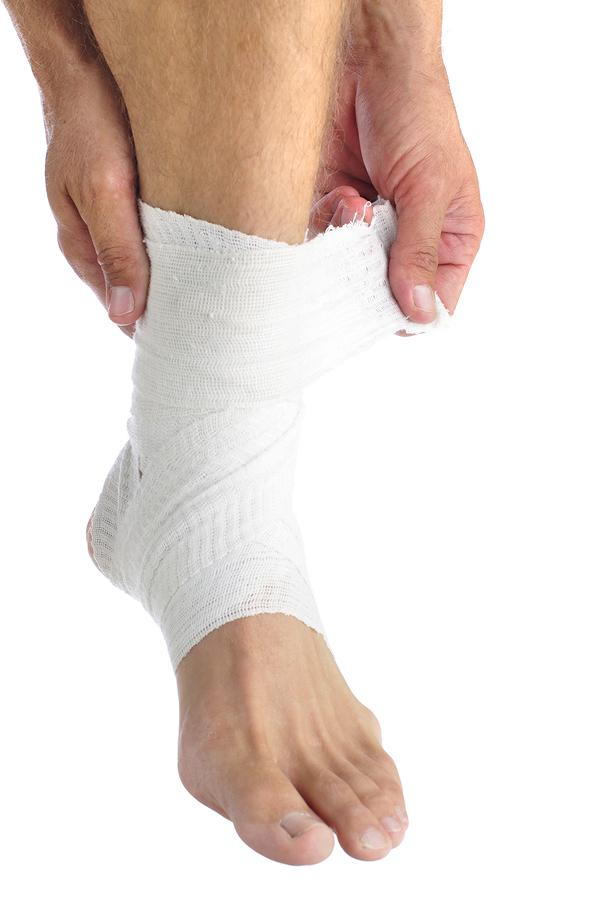 You want to make sure a sprained ankle heals properly. Here’s what you should do.
You want to make sure a sprained ankle heals properly. Here’s what you should do.
As you might imagine, ankles are pretty delicate and prone to injury. In fact, ankle sprains are one of the most common injuries to happen in both children and adults. Whether you stepped off the sidewalk awkwardly or you were involved in a sports-related accident, our Scarborough and Windham, ME, podiatrist Dr. Peter Ocampo is here to tell you the warning signs of a sprained ankle and how to best treat the symptoms.
Is it a sprained ankle?
It isn’t always easy to tell whether you are dealing with a strain, sprain or a fracture. Often times the symptoms are very much the same just more intense depending on the severity of the injury. So, how do you know if what you’re faced with is a sprained ankle? If you have a sprained ankle, you may be experiencing any of these symptoms:
- Ankle pain, particularly when you put weight on the foot
- Tenderness to the touch
- Swelling
- Bruising
- Instability or weakness in the ankle
- Limited range of motion
- A snapping or popping sound at the time of injury
If you are experiencing any of these symptoms then you could be dealing with an ankle sprain, but it could also be something more severe. This is why it’s important to see your foot doctor in Scarborough, ME, if you are dealing with an ankle injury. Any kind of pain or swelling should be evaluated by a doctor to make sure there isn’t serious damage to the ligament.
What is a sprain anyway?
Your ankle, just like the rest of your body, is made up of ligaments that help to support and stabilize the joints. These ligaments are also there to prevent the joints from going beyond their normal range of motion; however, when your roll or twist an ankle this can cause the ligaments to stretch outside their range of motion or even tear.
How is a sprained ankle treated?
For minor sprains, your podiatrist may tell you to keep off the ankle as much as possible and to follow the RICE method for treating your symptoms while the ankle heals itself. RICE stands for rest, ice, compression and elevation and here’s what you should know.
- Rest: Take time to let your ankle heal, which means avoiding physical activities that could make symptoms worse.
- Ice: To ease inflammation and pain, apply an ice pack to your ankle for up to 20 minutes at a time every 2-3 hour during the day.
- Compression: Applying a compression stocking or brace on the ankle can help keep swelling down.
- Elevation: Prop your foot up above your heart to reduce swelling. Placing your ankle above your heart will help drain the excess fluid in your ankle.
Sometimes you’ll need to turn to over-the-counter or prescription painkillers to help temporarily alleviate the pain. Those with more moderate-to-severe ankle sprains may require a brace or a walking boot to protect the ankle as it heals. It’s also common to go through physical therapy to help restore the ankle’s range of motion and to help restrengthen it. Only in rare cases when the ligament is severely damaged is surgery required to repair the ligament.
Southern Maine Foot & Ankle provides comprehensive foot and ankle care to the Scarborough and Windham, ME, areas, making it easy to get the care your feet need. From sprains and fractures to bunions and flat feet, our medical team can handle it all. Call us today to find out if your ankle sprain requires medical attention.
